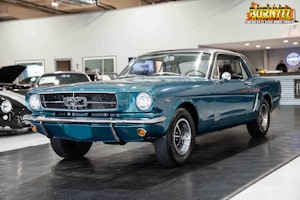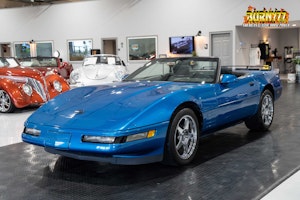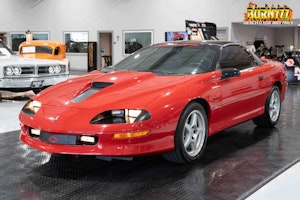Media | Articles
When the numbers match, but don’t add up – buyer beware
In an overheated auction room, the allure of a “fully restored, matching-numbers” car – and the fear that it might slip away at a bargain price – regularly pushes impulsive bidders to raise their paddles. But if the car’s authenticity has not been verified, that winning bid could become an expensive mistake.
One Midwestern buyer recently learned that lesson after finding that the 1967 big-block Corvette roadster he bought for more than $100,000 might be worth far less. He hired a Corvette expert, Kevin Mackay, to inspect the car, but only after it had been rejected by a judge from the National Corvette Restorers Society for having a reproduction trim tag. This metal plate, positioned next to the vehicle identification number tag on a bar beneath the glove box of 1963-67 models, indicates the car’s original equipment. (Tag locations vary by Corvette generation.)
According to Mackay, whose Corvette Repair in Valley Stream, N.Y., has restored many rare Corvettes, the deceptive practice of altering a Corvette’s original equipment and presenting it as a rarer, more valuable model is increasingly common. In this case, the white ’67 roadster with a blue interior, air-conditioning and a 400-horsepower 427-cid engine had left the Corvette factory a much different car.
How could that be? After all, it was claimed to be a numbers-matching example.
Mackay explained that the term “numbers matching” simply means the tags match the numbers stamped on the engine and transmission. All can be faked. By rubbing lacquer thinner near the 1967’s trim tag, Mackay uncovered overspray of its original color, Marlboro Maroon. Using the same technique on a hidden part of the dash revealed the interior color to be Saddle. Without the Corvette’s original tags, though, Mackay could not know its true powertrain and options, though the NCRS judge identified components that would suggest it had been built as a small-block car.
Marketplace
Buy and sell classics with confidence
It’s not the first time Mackay found himself delivering bad news to a Corvette enthusiast who had bought what was hoped to be a dream car.
“I can’t tell you how many cars customers have brought to me that have fraudulent VIN tags and trim tags and restamped engine blocks,” he said.
In the case of the white ’67 roadster, the buyer tried to recoup his loss through litigation, spending thousands more dollars, but lost. The court decreed that he had purchased exactly what the seller offered: a white 1967 Corvette roadster with a 427, four-speed and blue interior. The seller never claimed the car was authentic; the buyer only trusted that it was.
Corvette counterfeiters don’t just alter cars; sometimes they build them. Over the years, Mackay has come across several Corvettes with frames that had been spliced together.
You may not be able to authenticate a Corvette within the confines of an auction, but Mackay suggested tips for spotting a suspicious car. “The first thing to look at are the tags,” he said. “I find many are on improperly, which signals they were switched. I’ve seen VIN tags glued on. I found one held in place with bubble gum.”
He advises using a small mirror to inspect the frame for any kind of splicing, repair or unevenness, and to also check behind body panels.
“Corvettes used press-molded fiberglass panels with bonding strips until a switch to sheet-molded compound in the early 1970s,” Mackay said. “Look or feel under a fender. If there are no bonding strips, it likely has a replacement one-piece hand-laid fiberglass nose. That definitely hurts value. Check the fiberglass color behind the panels. It was a creamlike white before ’64, then light gray and then, starting in 1967, a charcoal color. Black suggests a non-original panel.”
Beyond the vehicle title, Mackay asks for paperwork documenting ownership history, including maintenance and repair records. On a restored car, he likes to see “before” and “in-progress” photos.
Mackay has been able to help buyers at auction remotely by having them use a smartphone to send clear photos of the tags, engine pad and any documentation.
“Maybe 70 percent of the time, I can identify a fraudulent car without seeing it in person,” he said.
Finally, Mackay suggests, “If you’re not sure, don’t take a gamble.”










